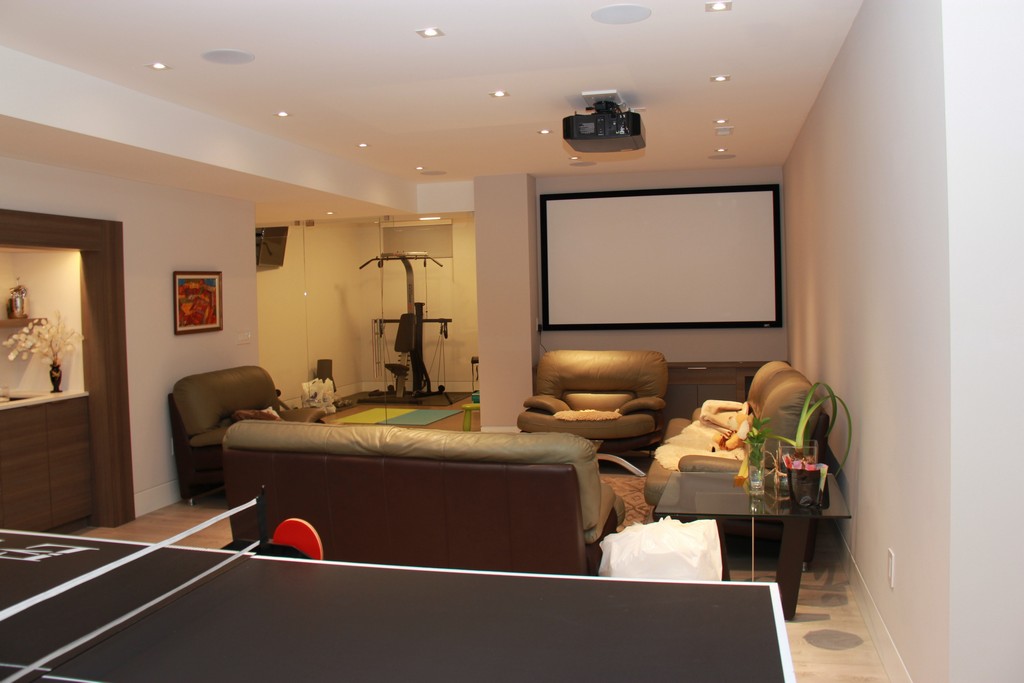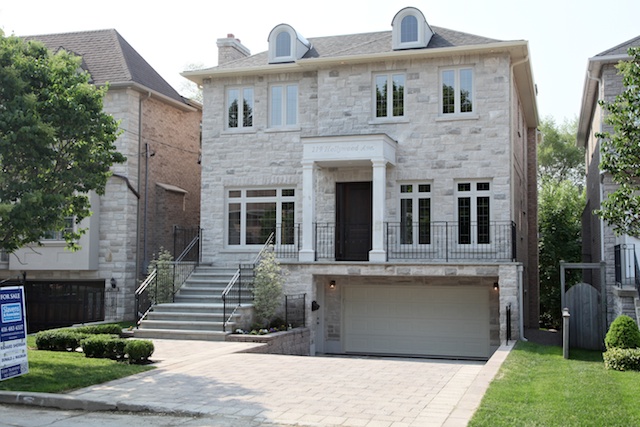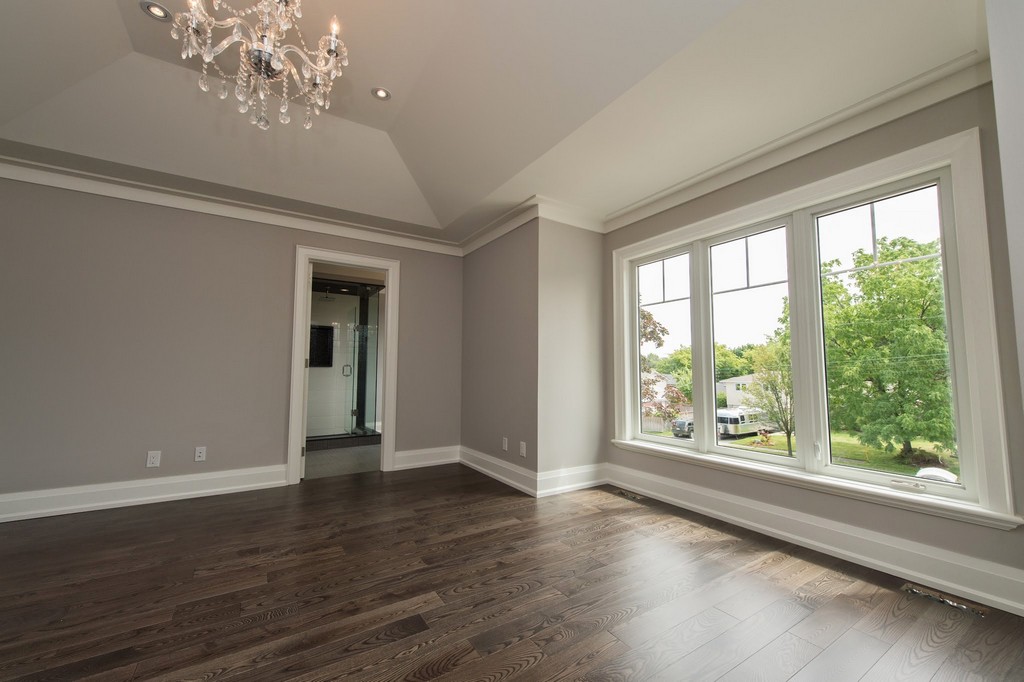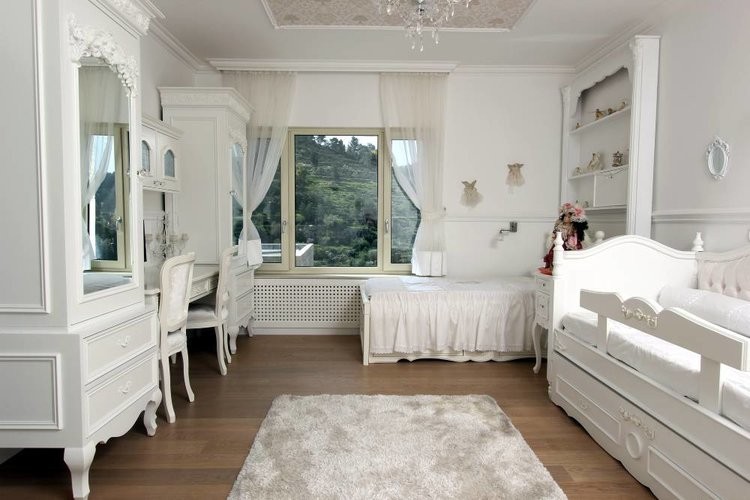Home renovations are a good way to maintain and even increase the property value of your home, especially in a competitive market like Toronto. However, the process of renovating your home is a complex, expensive and time-consuming process and while there’s no shortage of renovation companies in Toronto to help you out, it’s a good idea to know what you’re going to get yourself into when you decide to undertake such a project.
How Should I Go About Renovating My Toronto Home?
The Costs of Home Renovation
Each room in your home has a specific set of requirements and challenges associated with it when it comes to renovating. A renovated bedroom may only need new flooring and some paint, while a kitchen renovation or Bathroom renovation may require extensive plumbing, electrical, and gas line work. This naturally leads to differences in the costs of renovating parts of your home.

The relative costs take into account a number of things:
- Building materials vary greatly in cost. A laminate countertop will obviously be cheaper than one made of granite or marble.
- Labor is also a big factor in the costs of your home renovation. General Contractors set their own prices for labor.
- If you’re working on renovating a kitchen, you might want to invest in a new gas range or modernize your kitchen with an induction cooker. This and other appliances are also a factor to consider in the cost of the renovation.
- Lastly, the one factor that people occasionally forget to put into their cost calculation is the total cost of getting the permits and paying for the inspections needed before you are even allowed to renovate your home.
Planning Your Home Renovation Project
Review the structure of your home
The first thing to figure out when planning your renovation is the type of house you’re renovating. Houses in Canada are generally built in two ways: using a balloon frame or a platform frame.
Balloon frame houses have their external wall studs from the foundation all the way up to the roof. This is typically the case for older homes originally built around the turn of the 20th century. If you’re planning on renovating your ancestral home, this may be the type you’re dealing with. Balloon frame homes carry some limitations on what sorts of renovations you can do without making changes to the frame itself.

Modern homes are usually built with a platform frame. A platform frame means exactly that: each storey of the house is its own platform; meaning that the wall studs are only from the foundation or the platform to the ceiling of that storey. This type of home is easier to renovate in general.
Also very important to figure out is how your utilities are laid out. This means making a map of where your water and drainage pipes go, how your electrical circuits are distributed around the house, as well as gas pipes and air ducts. Knowing where all these are will help prevent any accidental damage to them when renovating and will be useful for renovations that might require additional piping or electricity rerouting.
Preparing your home renovation plan
After you’ve figured out the specifics of your house, it’s time to make a plan for the project itself. This will include two things: a floor plan and an elevation drawing.
- The floor plan is a layout of the room or rooms you’ll be renovating. You’ll need to detail door placement, fixtures, appliances and also electrical, HVAC and plumbing components in this drawing.
- The elevation drawing is where you detail the structure and any changes you want to do to the walls.
For both of these, it’s important to get the measurements and scale right. A good scale to use is 1/4th of an inch to 1-foot scale. You can use the blueprints for your house as a reference when drawing these out.

It’s important that these drawings are as detailed as possible as you will need to submit copies of these plans for review in order to receive your permits to build. To ensure this, it would be a good idea to consult or hire an architect or a designer to draft these plans for you, especially if your home renovation project is larger scale. These professionals have experience dealing with building codes and local restrictions and will be able to guide you in finishing your plans.
Preparing a Materials List
Once you’ve prepared your floor plan and elevation drawings, you’ll want to begin choosing the materials and equipment you’ll use for the home renovation and prepare a list of them. When preparing this list, it’s important to be as detailed as possible. The type of material you plan to use should be made clear since something like, say, the finish of your chosen wood flooring may drastically change the cost per unit of the material itself. Take note of the measurements as well as equipment specifications. Consult with a designer or architect so that they can assist you in choosing the right materials for your project.

This prevents confusion when it comes time to purchase materials for the project as you won’t have to struggle on remembering these details when it comes time to begin the project. If you’re working with a general contractor, it is also possible to have them provide you with the list themselves. A detailed materials list is also very useful for figuring out the costs of your project.
Preparing Your Home Renovation Permits
Now that you have your plans detailed, it’s time to get permission from your local government to begin working on your home renovation. In Toronto, permit applications usually take about 10 days to process for a house. A permit review will usually consist of a zoning review, a building code review, a mechanical plans examination (this includes checking plans to approve changes to plumbing, electrical, and HVAC systems), and a fire prevention examination for larger multi -family homes/structures that may have need for such a thing.

Applying for these permits comes with associated fees depending on the type of work you are seeking a permit for. Some of the more common fees associated with home renovations in Toronto are as follows:
- There is a minimum ~$200 fee for any form of work
- A ~$90 per hour for any assessment or inspection of the structure.
- The permit calculation in general is Service Index x floor space in sq. meters. Some of the service index prices for certain types of construction and renovation are as follows:
- Alterations/Renovations Fee for residential structures: ~$5
- Floor replacement: ~$6
- Balcony guard replacement: ~$2.50 per linear meter
- Balcony Repairs: ~$20 per balcony
- Basement finishing for dwellings and townhouses: ~$6
- Heating, Ventilation and Air Conditioning without ductwork: ~$200 flat fee
- HVAC: ~$250 flat fee
- Boiler, Furnace or Air Conditioning installation/replacement: ~$200 flat fee
For a more comprehensive fee structure check the City of Toronto website.
Speak to a General Contractor
Once you’ve gotten the plans worked out and figuring out the permits you’ll, if you don’t plan on doing the home renovation yourself, you can choose to hire professionals to do the work for you.
Hiring a renovation company comes with the experience and knowledge of design principles as well as familiarity with the building code. In fact, most Toronto renovation companies have in their team designers, architects and general contractors, all ready for you to consult with so you only need to find one company that can review your plan and execute it at once. These companies also usually offer a free estimate on your planned renovations as well.
Obtaining a loan
Having a plan to build and people to build your home renovation is all well and good, but you still need to pay for their work and services. While it’s certainly possible for some to fund the entire project in one lump sum payment, it’s usually a better idea, especially for large scale projects costing tens of thousands, to pay for it using a loan.
In general, you can avail of one of two types of loans: an unsecured loan and a secured loan. An unsecured loan, also known as a signature loan, is an agreement made between the lender and the person lending that they are to pay the borrowed sum, plus interest within a certain amount of time. In loans like these, the agreement hinges solely on the promise put into writing as there are no assets being taken as collateral. While not having any of your property being tied up in a loan sounds good, this will lead to higher interest rates that you’ll need to pay off.
A secured loan is the direct opposite. In these types of loans, the lender designates an asset of the client, usually their home, to be collateral as part of the agreement. In the event that the lendee cannot pay off their debt to the lender, they have the right to seize the assets used as collateral and sell it to pay off part or whole of the debt. Unsecured loans typically have a lower interest rate because of the fact that you are putting something up as collateral. Banks and mortgage brokers are usually the institutions that deal with these sorts of loans.
These lenders can also help you pre-qualify for a loan based on your income, property value, credit score and outstanding debts. Pre-qualifying for a loan can informs you of how much money you can ask for in a loan, serving as a good guide for what your budget for your home renovation might be.
Tips for Renovating Your Home
The following are just a couple of helpful tips for your future home renovation needs:
Stick with your renovation company
If you’re satisfied with the work and services of the renovation company you hired for your first project, it may be a good idea to stick with them for your succeeding projects if you’re looking to renovate multiple sections of your home one after another.
The most significant advantage in doing this is that the renovation company already has some familiarity with the structure and layout of your house. Another advantage is aesthetic consistency; having the same people guide the design of your new renovation can ensure some cohesiveness in the overall look of your home.
There are other places you can pick up furniture or appliances

If you’re on a budget or looking for furniture with a more vintage feel, there are number of Habitat for Humanity Re: Stores in and around Toronto. These stores take in donations and sell them for greatly reduced prices. Most of the profit goes into the organization’s housing projects. While most of the furniture sold in these stores may need some restoring, there are some donations of brand new appliances and fixtures as well. Purchasing from these stores can not only save you money, but also help build a home for people less fortunate as well.
Financial Options for the Elderly/People with Disabilities
If you or someone you live with is elderly or suffering from a disability that needs specific renovations done to your home, the federal and local governments have programs such as the Home Accessibility Tax Credit that can help recoup the equipment, tools, and labor costs of these types of renovations.
If you are planning on renovating your home in any way and would like a consultation or a free estimate for your project, do not hesitate to contact Milman Design Build. With almost 20 years of expertise as a Toronto renovation company, we’ll bring the exceptional skills necessary to bring your vision of the perfect home to life.